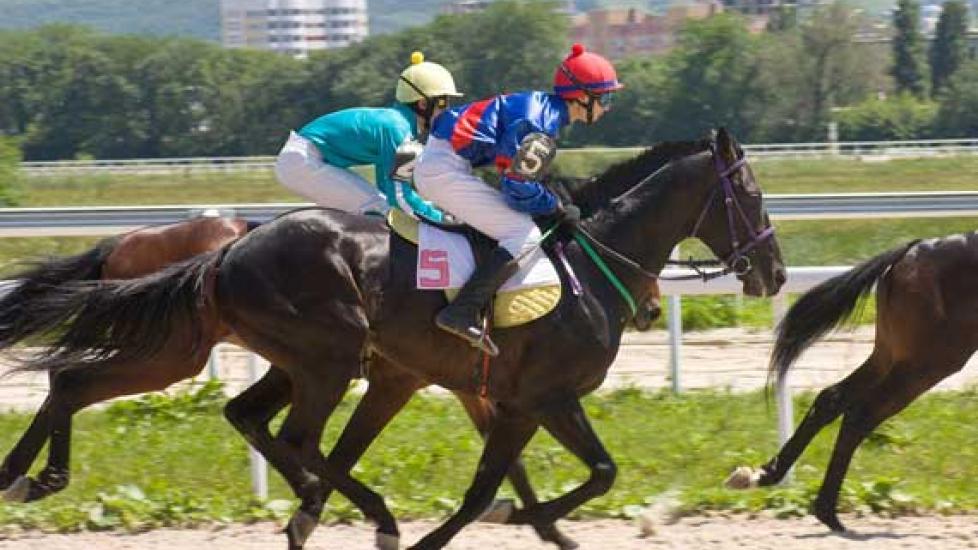Using Science to Make Racing Safer for Horses
The term “catastrophic injury” is familiar to a lot of people, even if they don’t watch a lot of horse racing. The demise of the second place filly Eight Belles in the 2008 Kentucky Derby right after crossing the finish line due to two broken ankles still haunts many horse lovers.
Breakdown injuries — when bones shatter during extreme physical exertion — is a known danger, particularly in racehorses. Today we’ll look into a few research areas that are trying to help prevent these disasters.
Horse Track Design
Dirt tracks have been a traditional footing for American racetracks. More tracks now, however, are turning to synthetic track material as some studies have shown synthetic surfaces tend to be more even and have more cushioning than traditional dirt (some of the synthetic composites contain rubber). Analysis of data from the Jockey Club showed horses suffered catastrophic injuries at a rate of 1.3 per 1,000 on synthetic tracks versus more than 2 per 1,000 on dirt tracks.
Surface type, however, may not even be the most important aspect. Studies have shown that track consistency might be an even more important factor in safety than track type. Unevenness in moisture can adversely affect footing and predispose a horse to injury. Hosing down the surface between each race has been suggested as a method to regulate moisture on a racetrack.
Horseshoe Design
The moment of impact, when a horse’s leg hits the ground at high speed, is a moment of incredible force. Bony alignment and footing must mesh together to provide a horse’s body with enough traction to bear weight and then push off again in a single stride; at the gallop this happens four different times — one time for each leg as it hits the ground. Understandably, horseshoes can have some impact on this mechanic.
Toe grabs are an implement on horseshoes used to increase grab on the surface. Studies have shown that toe grabs on the front feet of racing Thoroughbreds increases the strain on the front legs, predisposing the horse to injury. As a result, there are limits to the size of the toe grabs that are now allowed on the front shoes of racing Thoroughbreds (the larger the toe grab, the higher the stress placed on the leg).
External factors aren’t the only source of threat for breakdown injuries. The horse’s body itself plays the biggest role in whether his bones will hold up during a race. How the horse was trained, his inherent leg and hoof conformation, connective tissue strength, genetics, and previous injury all influence future races.
Track designers have noted that it’s not necessarily the track that injures the horse. Rather, it’s the accumulation of the hows, whys, and whens of each individual horse’s racing history that factor into a complicated formula of bone strength.
If all this talk of injuries has you down, here’s maybe a little piece of silver lining: More horses are surviving catastrophic injuries as compared to decades ago due to better diagnostics, surgical procedures, and pain therapies. Rehabilitation centers are more widely available, and state of the art physical therapy for these athletes is commonplace.
Will there be a time where catastrophic injuries are a thing of the past? No. But researchers and veterinarians are slowly chipping away at the number of them to make them further and fewer between.

Dr. Anna O'Brien
Image: Mikhail Pogosov / Shutterstock
